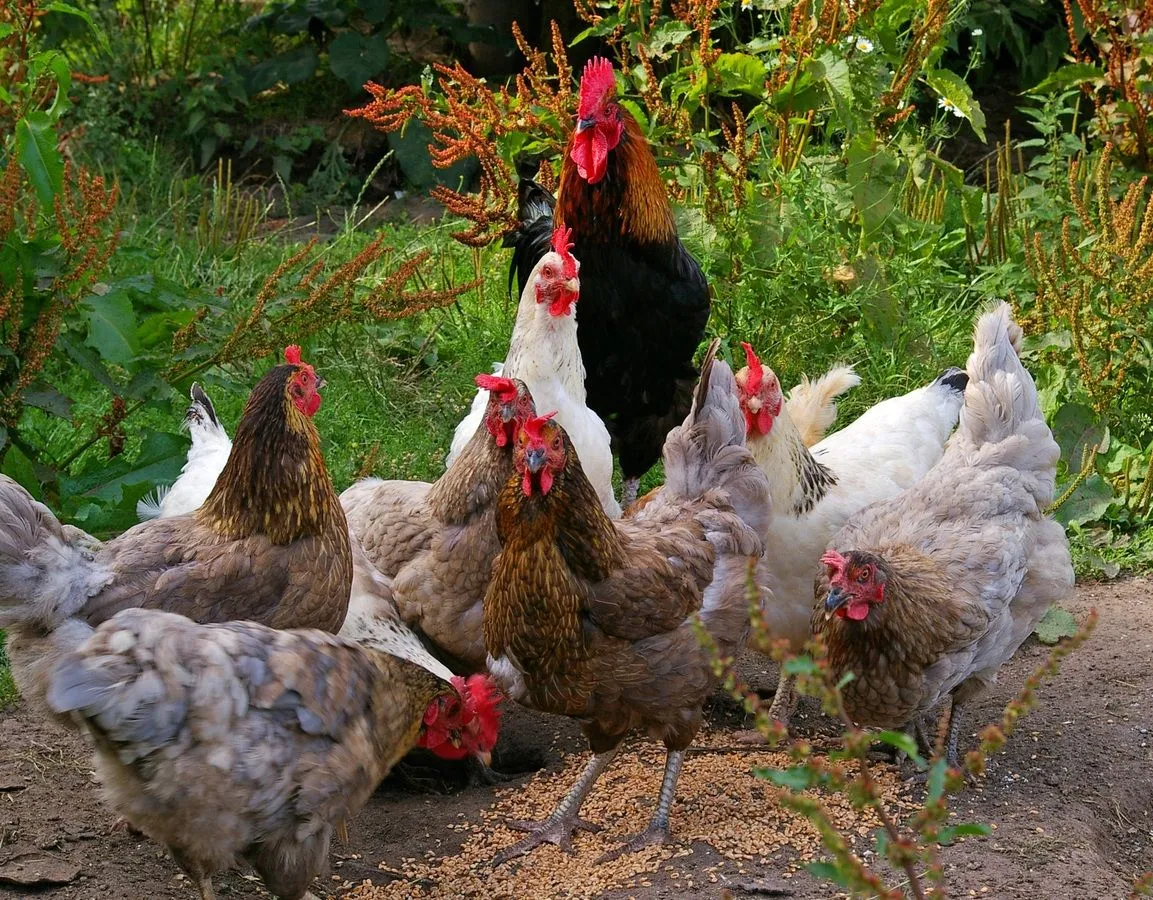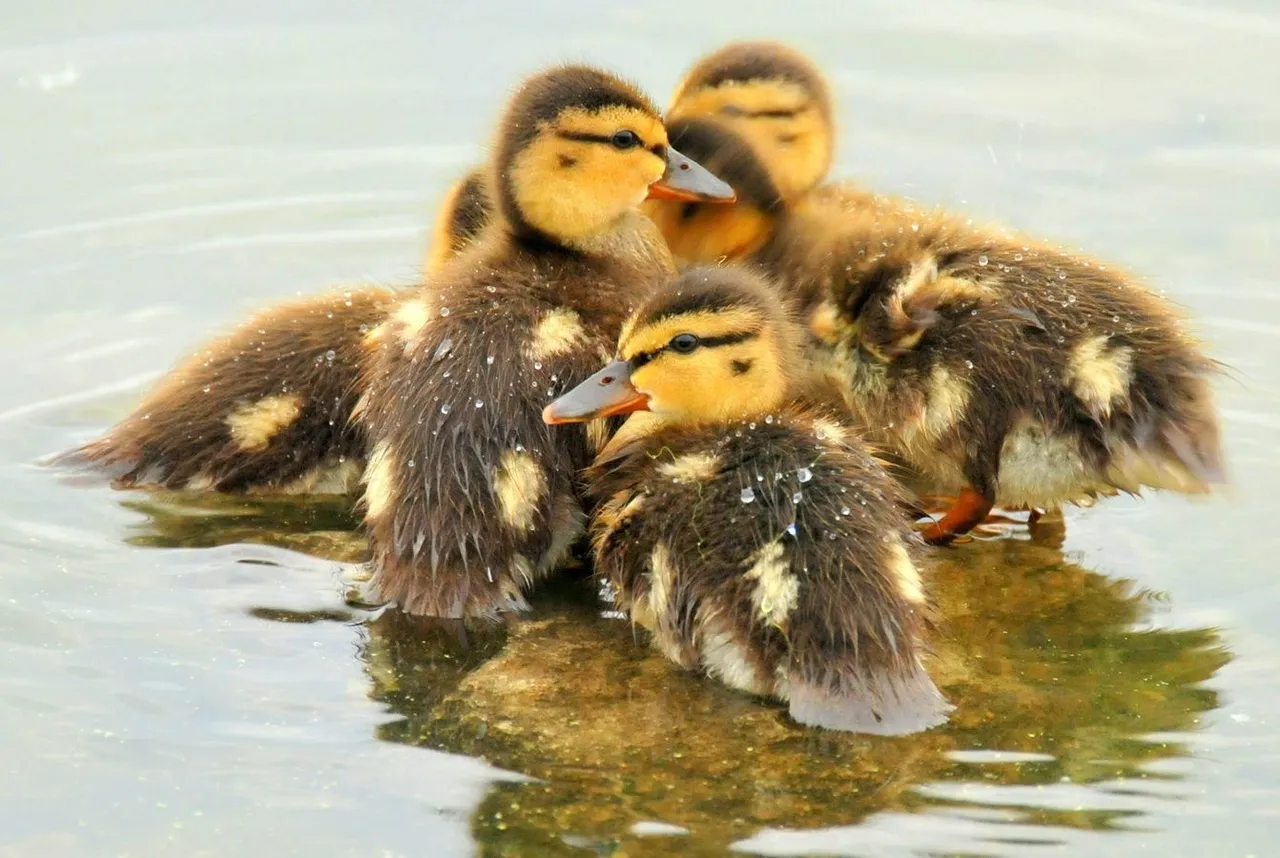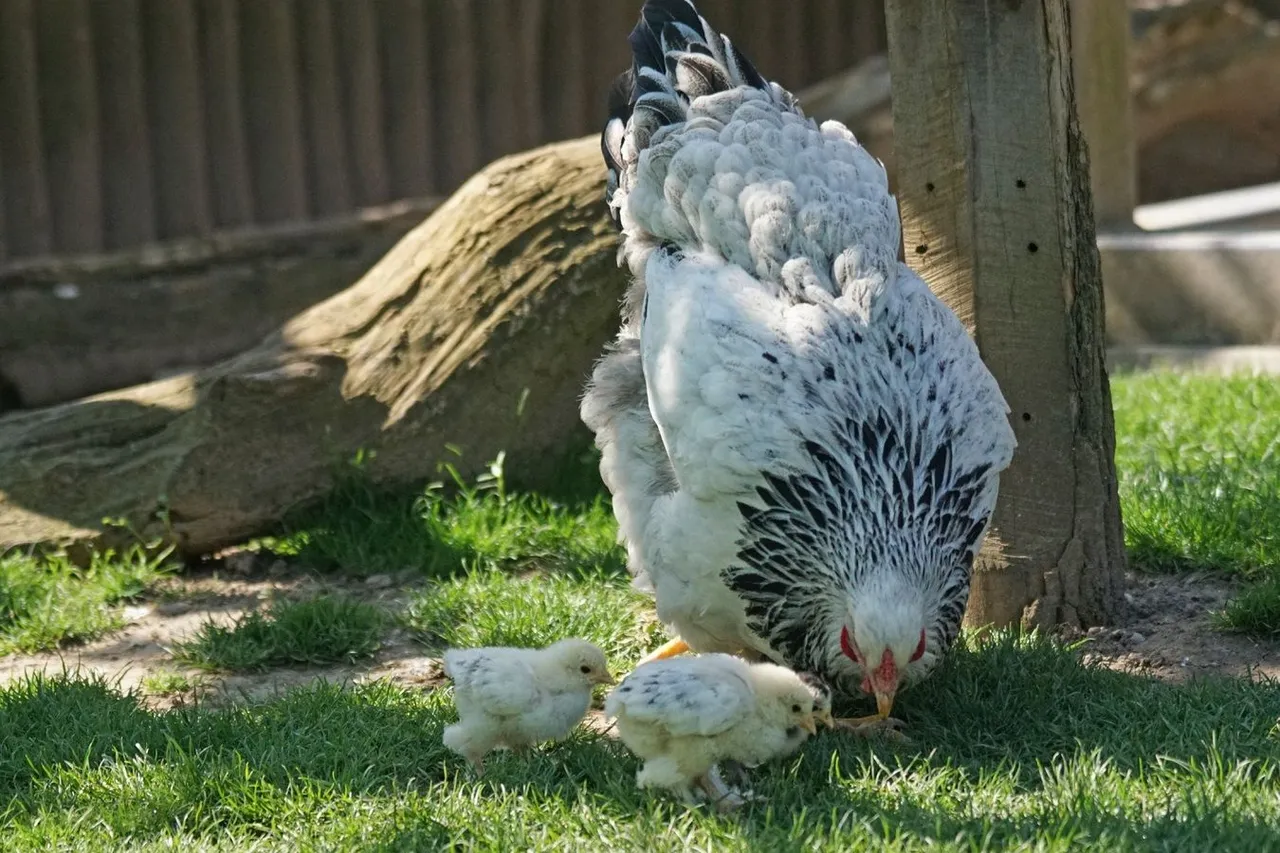With the skyrocketing prices of eggs in the US, poultry keeping is more popular than ever! And with my new job at Tractor Supply Company, I felt it would make it easier for me to give better advice if I spent a bit of time researching types of poultry feed. Though I have raised chickens before and have a basic idea of what I need, that's different from advising someone else – and telling them why they need such-and-such instead of something else... So, with that in mind, here is today's post on what feeds are available and what their main purposes are – as well as the main ingredients in most feeds.
One thing I quickly found in my research, is that opinions vary as to what is the most appropriate food for various ages, stages and purposes. Some of this seems to vary according to whether the birds being fed are commercial or for the family homestead.
Find the right food for your poultry according to age, stage and purpose.
There are different stages of development in poultry with different nutritional needs. Differences in purpose also affects which feed you might like to feed your birds.
Starter – 18-25% - for birds during heating needs – or about the first six weeks of life.
- crumbles are typical form of feed at this stage.
- Higher protein (18-20% for laying chicken breeds, 20-24% for meat birds.
- medicated (optional) – Amprolium is added to many chick starters to prevent coccidiosis, a parasitic disease passed through fecal droppings (of rodents) and can have adverse effects on chickens, especially chicks. However, keeping their area clean with good, clean feed and water is often all that is necessary.
- Important to limit this feed to their first 6 weeks of life, as feeding it for too long can cause liver damage due to the excess protein.
Grower – 16-18% - for birds from about 6 weeks of age until point-of-lay or slaughter.
- Protein should be lower in pullets (young females) as this allows slower growth to ensure proper development of structural bones.
- Protein should be higher in broiler chickens, since faster growth is desirable and future bone structure isn't so important.
Broiler Feed – 25% protein – for meat birds from about 4 weeks of age until slaughter. Some farmers will feed their broilers this feed from hatch.
- Ideal to support the rapid muscle growth of broilers to get them to slaughter weight as quickly as possible without sacrificing their health along the way.
Flock Raiser – a generalized, multi-purpose feed.
- Good for a mixed flock, such as a flock with multiple ages or species.
- Lacks the specialized needs of broilers, layers and show birds.
Layer rations – 16% - for laying hens.
- Extra calcium and minerals are included to give strong eggshells (these levels can damage the kidneys of young birds, so shouldn't be fed to them.)
- Roosters living with the hens can eat this just fine, so there is no need to worry about them.
Game Bird Feed – high protein (20-30%) for the needs of game birds (turkeys, pheasants, quail, peacocks, guinea fowl, etc)
- Often fed to show birds for rapid, healthy growth and shiny feathers.
- Sometimes fed to old or frail birds, especially in winter.
- Specialty ingredients including sunflower seeds, peas, alfalfa and cricket meal.
- Supplemental vitamins and minerals to support good feather thickness and color, comb and wattle shape and ideal shape of the overall bird.
Scratch grains – a mixture of whole grains including oats, barley, corn, milo, millet, black sunflower seeds and other things. It's considered a treat and a supplement, not as a nutritionally-designed chicken feed.
Waterfowl such as ducks and geese
As waterfowl are less prone to coccidiosis, they do not need medicated chick starter, though apparently the coccidiostat used in the USA these days (amprolium) is not harmful to waterfowl – unlike the sulfa drugs used in the past which could quickly become toxic in greedy ducklings or goslings. However, the medication is probably still best avoided, if you have the option.
Ideally, your babies should have starter designed for waterfowl but can do fine on unmedicated chick starter or even game bird starter for the first two to three weeks. At this time, they need to be switched to a lower-protein grower feed (in crumbles) to prevent the development of a wing deformity (that I've seen in my personal flock when I was in high school.)
As with other birds, the young should have crumbles (or wet mash). Adult ducks can have pellets.
Waterfowl need to have adequate niacin (vitamin B3) in their diets to prevent leg deformities – they require almost twice what's required for chickens. If you are feeding a chick starter, you may need to supplement niacin. One way is to add ½ cup of brewer's yeast per 10 pounds of feed. Other sources include: distiller's grains, fish, sunflower seeds and beets (in our store, you can find beet pulp pellets in the horse feed section and the deer feed aisle).
Ingredients
Non-GMO – an increasingly common option as people often turn to raising their own flocks as a way of avoiding GMOs in their food, including to the foodstuffs given to their animals. For the most natural option, using products free of these controversial modifications promotes healthier, stronger poultry overall.
Certified Organic – free of preservatives, additives, antibiotics, hormones, pesticides, etc.
ingredients include: organic wheat, barley, peas, flaxseed meal, corn, soybeans, molasses, fish meal, sesame oil, etc. More expensive due to higher labor costs and separate transportation needs, plus limited supply and government certification.
Soy-free – more and more feeds are giving the option of being soy-free – useful for people with that allergy. (I, personally, notice a difference when I consume eggs from soy-free chickens.) These feeds will have more peas and other grains in place of soybeans.
Whatever food you use, make sure that the protein percentages are optimal (more is not better!) and that it has good sources of calcium, phosphorus, zinc, magnesium, manganese and vitamin D3.
Forms of feed
Pellets – Probably the most popular type of food given to poultry. The pellets are easy to eat and aren't as quickly wasted as other forms of feed.
Crumbles – As it sounds, crumbles are just a crumbled pellet. Easier to eat than pellets, it's usually fed to chicks, but some chickens simply prefer it. The downside is that it's easy to waste if not fed in a feeder as once the food is on the ground, it's easily lost.
Mash – This is a finely ground chicken feed that is good for chicks and as a convalescence food – or a way to feed a warm meal in the winter. Although it could be fed dry, most people mix it with water. It must be fed immediately and cleaned up quickly after mealtime as it will quickly go bad.
Fermented – Whether you are feeding grains or other commercial feed, you can ferment the feed to increase its nutrition content and the satiety it gives to your birds (saving you money.)
Fermenting feed is easy. Fill half a bucket with feed, then cover with dechlorinated water by several inches. Cover and let sit (stirring daily) for 3 to 5 days until bubbles form in the water. Strain and feed while still wet.
(When I did it, I didn't cover it... I just let it sit two days, then fed the whole mess to the chickens who loved it more than anything – other than mealworms, anyway!)
Grit
All birds need grit to help them break down their food. Although in the wild, birds (including free-range poultry) can forage enough grit for their needs, cooped and caged birds require grit to be supplied.
For poultry, there are a number of options which can be broken down into two categories: soluble and insoluble.
Soluble grit is generally made from shell – whether crushed egg shell, oyster shell or limestone (ancient shell). The advantage of feeding soluble grit is that it boosts calcium to help form strong egg shells in layers. I have even heard of broken china being crushed and fed to chickens to fulfill this need.
Insoluble grit is made from granite, flint or other crushed rock. Charcoal is often added as a digestive aid.
Supplements
Greens – Most greens are good for your poultry flock. Do check below to make sure it's not in the “what NOT to feed” section, but otherwise, it's a good way to spice up the feeding routine and get a dietary boost at the same time. If you grow them yourself, it can also reduce feed costs.
Flaxseed – a bit of omega 3, this is a useful supplement in the diet of laying hens. Of course, it might already be in your feed, so double check your ingredients first.
Brewer's Yeast – this is a great niacin boost for waterfowl at ½ cup per 10 pounds of feed.
Oatmeal – raw or cooked, it's a great nutritious treat for your flock.
Mealworms – high protein snack that all chickens love (you can buy them prepared, or you can grow your own for the cost of a small tote and a bag of cornflakes... and a few live mealworms to start.)
Pumpkin seeds – and the rest of the pumpkin scraps from Halloween – are all very good for your poultry flock.
Garlic – used in the feed or water, or as a spray – this is a very good choice to keep immune systems strong, clean out parasites or treat minor wounds.
Ways to reduce feed costs...
Pasture-raising your flock will allow them to eat insects, bugs, weeds, grasses and seeds to stay healthy. (In ages past, poultry didn't have special rations – they just roamed around the farmhouse eating whatever they found, only supplemented with kitchen scraps and handfuls of grain.)
Grow greens to feed your poultry or give them the weeds you pull from the garden.
Ferment your feed – making it more nutritious and more satiating... the birds also love it more, in my experience!
Create a maggot bucket from your meat scraps. (I saw this on a TV show once and thought it was brilliant!) Drill holes in the bottom of a bucket... Put meat scraps in it... let the flies do their thing... When the larvae fall through the bottom of the bucket, the chickens have a treat. (Of course, chickens also enjoy meat scraps.)
Things NOT to feed to your poultry flock
- Bread isn't good for your flock – commercial bread can swell in a duck's throat. (If you feed bread scraps, make sure they hits the water before any ducks get to eat them.)
- Cat food – the high level of methionine is potentially toxic.
- Spinach – prevents calcium absorption. Feed sparingly, if at all.
- Avocado – most animals cannot eat this food.
- Chocolate – (same as above.)
- Onions – large quantities are toxic.
- Dry/undercooked beans – the hemagglutinin is toxic to most animals (including humans.)
- Citrus – the acidity can cause digestive issues.
- Raw green potato peels, green tomatoes and eggplant – the solanine is toxic to animals too.
- Human junk food.
- Moldy food, in general – can cause a lung infection
- Rhubarb – the leaves contain a toxin – oxalic acid. The stalks can cause thin-shelled eggs.
- Dairy – can cause scours. Small amounts might be okay as a treat. (I've used yogurt as a probiotic.)
Conclusion
This is a rough guide to feeding poultry both with commercial feeds and supplements you can source (or grow) yourself. There are many options to suit your budget and situation. Hopefully, you can find some food for thought here.
Resources
The Spruce - https://www.thespruce.com/types-commercial-chicken-or-poultry-feed-3016568
Meyer Hatchery - https://blog.meyerhatchery.com/2020/04/different-types-of-poultry-feed/
Chicken Scratch blog - https://cs-tf.com/chicken-feed/
Raising Ducks - https://www.raising-ducks.com/feeding-ducklings/
Duck DVM - http://www.duckdvm.com/condition/niacin-deficiency
Hubbard Feeds - https://www.hubbardfeeds.com/species/lifestyle/game-bird/game-bird-feeds
New Life on a Homestead - https://www.newlifeonahomestead.com/what-you-can-and-cannot-feed-ducks/
The Hearty Hen House - https://theheartyhenhouse.com/2021/04/22/beet-pulp-for-your-animals/
Images from Pxhere.
Crossposted on my Wordpress Blog. May contain affiliate marketing links.
Join shareasale.com, Earn Cash! (Affiliate link)
Freya Domestica is my new brand - on Wordpress and RedBubble - addressing the needs of the modern (aspiring) domestic goddess. Please come for a visit. Also visit Freya's Moods on YouTube for help with relaxation and sleep! Help me have time for writing again!
Previous Posts from Freya Domestica
Sleep Deprivation: A Common Problem - Best Methods for Better Snoozing
Cannabidiol as Medicine - CBD oil to Help Your Journey to Wellness
Getting Optimal Sleep - Choosing the Best Mattress for Your Needs
Which is the Best CBD for Me?
Lori Svensen
author/designer at A'mara Books
photographer/graphic artist for Viking Visual
(Buy my work at RedBubble, TeePublic, PicFair and DeviantArt.)
verified author on Goodreads
(Buy my books at Books2Read and at LBRY)
find me on Twitter





